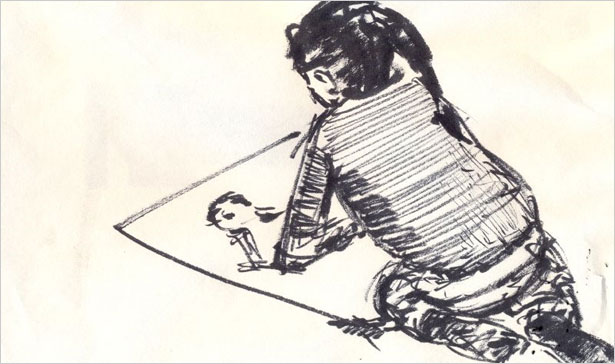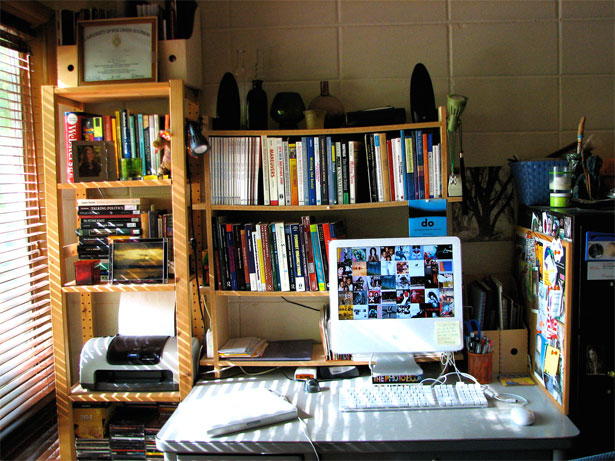 The field of web design is constantly changing and growing.
The field of web design is constantly changing and growing.
Getting in a rut is often the result of not staying up to date with the latest trends and technologies in the industry. Even if we do stay up to date, many of us at one time or another feel anxious about whether we're advancing.
If you're at a firm, you may be working towards a raise or promotion, or perhaps you're thinking of jumping ship to a bigger and better company.
For the freelancers out there, we of course determine our own destiny; but far too often our careers feel stagnant, too.
This article goes over some ways to reignite your growth as a web designer.
When You Know You Need to Grow
I love to live simply. If I don't see the need to grow my business, I won't. For me, more money does not equal more happiness, especially if I have to work myself to death for it.
But many designers get to a point, as I have in the past, where they feel they have to grow in order to be comfortable with themselves and their business.

When does this point come? Well, it's different for everyone, but most web designers fall into one of the following categories:
- You need more financial stability.
Whether you're expecting a baby, buying a house or climbing out of debt, life changes demand career changes. Improving as a web designer and cultivating your business increases stability. - You're anxious for advancement.
As life goes on, even if we're financially stable, we yearn for advancement to fill a need for self-worth. It's not selfish, just a part of life. Advancing one's career is a great way to advance personally. - You're just learning the business.
Whether you're young or just switching careers, you may be new to web design. To be successful in this business, you need to learn how to grow.
These scenarios are general, and surely many of us have been through all of them. Whatever your reason for wanting to grow as a web designer, the tips below may help.
Define What You Love to Do
This will make you happier at your job every day—that much is clear. But how does it make you a better web designer?
When you have to perform a task that you're not interested in or inspired by, you do it very slowly, and the work day gets eaten up pretty fast.
Motivation is a driving factor, and without it your day becomes slow and inefficient.

Every day, we spend time doing tasks we hate, sometimes willingly, sometimes not. By minimizing these tasks, we can spend more time doing what we love, and by doing what we love, we get more work done because it doesn't feel like work.
How do we figure out what we love? It's not what brings more money or gets more clients. It is not even what you do well. In the context of a job, we love what makes us excited.
Don't merely be content with what you're doing; make sure you're excited. What task do you do when you don't have to do anything, that you don't have to force yourself to do? What's the one job that keeps you up late at night, without even realizing it?
Focusing on Your "New" Job
If you're a freelancer, remove any services from your portfolio that you don't like doing. Some think that offering numerous services brings in more clients, but fewer services can bring in just as many clients if you market them well.
If you don't like to code, then don't, even if you know how to do it. Outsource it, and don't mention the service on your website.
If you're at a firm, trading off tasks can be as easy as talking to a supervisor or co-worker. A co-worker down the hall may love doing exactly what you hate.
Learn a New Technique
With the wealth of tutorials on the web, learning something new every day is easy. Most web designers see elements and tricks every day that they wish they could do.
Too often we say, "This would really be cool to implement in my next design." Yet, we hardly ever look up how to actually do it.

Another great idea is to set aside time in your workday to focus solely on learning something new. It could be a new coding practice, design technique or business tactic.
Don't rely on browsing, because therein lies distraction. Instead, decide ahead of time what you'd like to learn, and focus on that during your set time every day.
This is a great way to keep up with technology and fellow designers. They move so fast, and falling behind is all too easy.
Collect Books, and Other Reliable Material
Collect books, magazines, articles, RSS feeds, tutorials and more to improve as a web designer. Both web and print materials are required to gain the knowledge you'll need to advance.

Every good web designer has relied on certain resources to learn the ropes and stay up to date.
One can learn technique after technique, but we never really grow without some good reliable resources that delve deep into the heart of web design.
In other words, a shiny new Web 2.0-inspired button won't get you as far as a sound understanding of positive and negative space.
Solid design and coding principles last much longer, and help you improve as a web designer much more quickly, than "tricks."
Keep an Inspiration and Motivation Notebook
As creative people, we're always coming up with great ideas. The problem is finding our record of those ideas when we need them.
Because we create one design after another, we're not always on the ball. Burning out is easy and a huge inspiration killer.
We have to find a way to call up that motivation and inspiration on demand. Keeping a notebook of ideas and encouraging thoughts is a great way to do this.

Such a notebook could include sketches, written ideas, sources of inspiration, magazine clippings, book references and anything else.
It might also help to write down what has motivated you in the past; simply reading past experiences can be encouragement enough.
Build New Habits
When reading articles such as this one, we constantly discover new ways to improve ourselves and our business. The problem is that we don't often apply everything we read. We are prisoners of our own habits.
To change this, don't just find new things to do; rather, focus on forming new habits that will help your career.
For example, if you would like to sketch more ideas on paper for design projects, set a goal to do it consistently for the next 10 projects.
Setting goals turns your nascent habit into active steps, rather than leaving it as something "you'll start doing someday."

Studies show that a person takes on average 30 days to build a new habit. Yet different habits require different time periods to form.
For example, one group of participants took only eight days to form the habit of drinking more water every day, yet smokers took over two months to quit cigarettes. Different habits take different times to form; it depends on the person and the nature of the habit.
So, whether you want to optimize CSS files for quicker loading, sketch before starting each project or enhance your design skills, be sure to do it consistently and make it a habit. Otherwise, you'll fall back into the same rut of inefficiency.
Forming new work habits is a prerequisite to changing and growing in your job.
Re-Organize
Remember your first day at the office? The first thing you probably did was get organized, buy a bunch of new stuff and prepare pretty charts to track your progress and help you expand.

Look at those things now. Are they still used? Are they buried under all of your junk? Have you used even half of it? Even if your work space is not messy, is it organized for the way you do business today?
Chances are your perspective has changed as you've learned to run a business and do your job efficiently.
Take time to clean up, and reorganize your work space so that you actually use the things you set up on that first day. Organizational tools, ideas and supplies that you've long forgotten about are bound to pop up.
After unearthing everything, re-organize it to be more efficient.
Wrapping Up
Growing is a never-ending process, so it should be something to look forward to.
One trick is to think of every business or personal advancement as a new beginning, where you throw all of your old career problems out the door.
Optimize, learn and grow if you want to succeed.
Written exclusively for WDD by Kayla Knight.
Everyone has gone through different stages in their career. Whatever stage you're at, feel free to share some steps we can take to advance in our careers.















